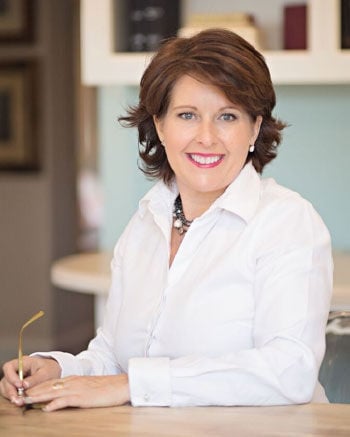Children are inherent dreamers. They have imaginary friends, create games and change direction all the time, viewing the world as a place full of possibility.
I watched my children start a new “business” every weekend, from lemonade stands, to jewelry made from sticks, to “ice sculptures” (i.e. frozen water balloons).
On a regular basis, children are asked what they want to be when they grow up. The options are endless.
But once we are “grown-up” (I use that term loosely) the dreaming slows down. We spend less time imagining and more time worrying.
In times of stress, our brain focuses on what we have to do vs. what we could do. Sometimes, without even realizing it, the dreaming stops.
Left unchecked, that dreamless spiral can give way to all kinds of mental weight: Imposter syndrome, self-doubt and the sometimes-crippling fear that we aren’t living up to our potential.
And when your potential seems vague, the thought spiral can become even more anxiety-inducing. Here are three tips to reconnect to what you’re capable of:
Identify when you are in ‘flow’
Flow is a concept in positive psychology defined as a mental state of focused attention so intense that it does not allow us to have cognitive bandwidth left for anything else. It is a state of such profound task absorption and intense concentration that makes a person feel one with the activity.
Now you might be thinking: I never feel that when I’m creating reports or preparing for a meeting. That’s OK.
Think about when you feel it potentially outside of your day job. Is it when you’re solving problems, connecting with other people or thinking creatively? Knowing what lights up our adult brain helps us rediscover what we are inherently great at.
Ask your friends or colleagues what they think is possible
The people around us, those who have worked with us on projects, seen us grow or heard our ideas can be more in touch with our potential than we are ourselves.
High achievers tend to discount their accomplishments by saying “it’s no big deal” or “it’s not even that good.”
When we discount the present, we shortchange the future. Look back at the positive feedback you’ve received and start taking opinions from trusted sources. This regular practice will help you see your potential more clearly.
Interview for a new job
Even if you have no intention of leaving your role, this process gives your brain permission to explore the potential. Here’s something that struck me from Laura Gassner Otting’s recent TEDx talk, Why doesn’t success bring happiness?
She said, “Do you know why internal candidates always leave if they don’t get the job? Because the very process of interviewing for the bigger job means that once they saw themselves in this new way, even if for a moment, they couldn’t unsee themselves in this new way.”
My friend and colleague Whitney Johnson first teased out that snippet. To me, this point lands, because once you see the possibility of something — a new job, a new career, even your internal project taking off — you can’t unsee it.
So, whether it’s a new role, filling out an RFP or applying to give a TEDx talk, allowing your brain to sit in the what if stage helps you reconnect with possibility.
Recognizing your true potential comes with both promise and heartbreak. Promise because you know what’s possible, and heartbreak, because you know what’s possible.
Too often, we cover our eyes, bury our heads into our to-do lists, and forget what’s possible for our lives. We cost the world, and ourselves, so much when we lose sight of our potential.


